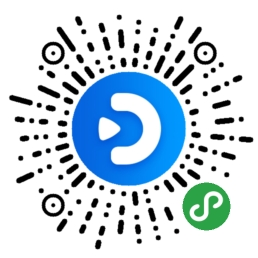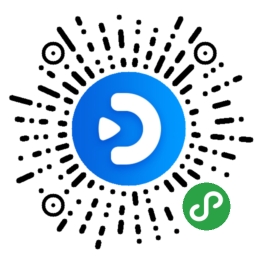Snap (SNAP.US) 2025年第二季度业绩电话会
文章语言:
简
繁
EN
Share
Minutes
原文
会议摘要
Snap Inc reported significant growth in Q2 2025, with 932 million monthly active users and a 9% year-over-year revenue increase to $1.34 billion. The company highlighted the success of sponsored snaps, the stability of brand advertising revenue, and substantial investments in augmented reality (AR) and AI technologies. Notable advancements include the Snapchat app on Apple Watch, improvements to video chat features, and the introduction of Lens Plus, a subscription tier offering exclusive AR experiences. Snap Inc is also focusing on building a strong developer ecosystem for AR glasses and fostering a large AR developer community.
会议速览
Snap Inc. reported progress in user growth, advertising business, AR technology, and financial performance at its financial report meeting in the second quarter of 2025. The company reached 93.2 million monthly active users, showing significant year-on-year growth, and is moving towards its goal of serving one billion users. Its advertising business platform has attracted numerous companies due to its unique brand safety environment and market positioning targeting the younger generation. At the same time, the number of subscription users for SnapChat Plus is approaching 16 million, making a significant contribution to the company's non-advertising revenue. The company's long-term investment and innovation in AR technology, as well as adjustments to its internal structure to optimize engineering and technology investments, demonstrate its strong confidence in the future. In addition, SnapChat has launched a series of new features aimed at enhancing communication and interaction between users, including an Apple Watch application, enhanced video chat, etc., all of which reflect the company's continued commitment to improving user experience and promoting user engagement.
In the second quarter, Snapchat acquired the social calendar app Saturn with the aim of enhancing real social contacts between users and exploring deep integration with Snapchat technology. Furthermore, Snapchat continues to innovate in the field of augmented reality (AR), with over 350 million users using AR features daily. They have launched several AI-based AR lenses, such as the 90s school photo AI lens, different eras AI lens, and cartoon world AI lens, which have received over 1 billion views. To support AR creators, Snapchat has introduced tools like Easy Lens to lower the barrier for AR creation, and plans to launch the first fully independent lightweight AR glasses in 2026. In terms of advertising, Snapchat has significantly improved its advertising platform through optimizing AI and machine learning capabilities, enhancing ad formats and tools, and strengthening market strategies for small and medium-sized businesses. Specifically for e-commerce advertisers, purchase volume and ad revenue have grown by 39% and over 25% respectively. Additionally, Snapchat has introduced new advertising products such as Sponsored Snaps and First Snap to enhance interaction between advertisers and users and increase conversion rates.
SnapChat has significantly improved the efficiency and effectiveness of advertising through the launch of AI-driven Smart Campaign Solutions, including Smart Bidding, Smart Budget, and Auto Targeting. For example, a sports brand in Europe, Roas, doubled their return on ad spend, increased conversions by 50%, and decreased costs by 50%. At the same time, SnapChat has optimized market operations for small business advertisers, making small businesses the main contributors to advertising revenue growth. Through more efficient advertising products, improved market strategies, and simplified purchasing experiences, such as the French online financial tool wys B Money, costs have been significantly reduced and ECPM and click costs have been increased using SnapChat's intelligent bidding. In the future, SnapChat plans to deepen investments in AI and machine learning, innovate advertising formats, enhance advertising optimization tools, and ensure high performance and automation for all advertising partners on the platform.
The report shows that global community DAU grew to 469 million in the second quarter, with total revenue reaching 500 billion MP, a 9% year-on-year growth. Despite facing challenges such as advertising platform issues, the impact of Ramadan, and policy changes, advertising revenue still grew by 4% to 117.4 billion MP. The launch of Lens Plus subscription service drove a 64% growth in other revenue streams. It is expected that DAU will reach 476 million in the third quarter, with revenue between 147.5 billion and 150.5 billion MP. Emphasis is placed on continued investment in ML and AI to enhance advertising effectiveness and personalized content, while also optimizing cost structure to achieve long-term growth and positive cash flow.
In this discussion, the Snapchat team detailed their optimistic outlook on sponsoring Snap ad units, emphasizing the potential of this ad format for high-frequency usage within the app. They pointed out that sponsoring snaps has already brought incremental reach and conversion rates for advertisers, while also increasing user engagement. Additionally, the team explained the reasons for the slowing growth of ad revenue in the quarter, including the impact of adjustments to the advertising platform, changes in the timing of Ramadan, and the effects of minor changes. They stressed that with these adjustments, ad revenue growth is recovering, and they are confident in the growing demand for new ad units.
The performance changes of brand advertising and Direct Response (DR) advertising in Snapchat's advertising business were discussed. It was pointed out that brand advertising revenue remained stable in the second quarter, while DR advertising revenue experienced significant growth. At the same time, Snapchat's unique vision in Augmented Reality (AR) and eyewear products, as well as its competitive strategies against Meta and Google, were also discussed. It emphasized Snapchat's enthusiasm for AR and its ability to pursue a vision independently.
The conversation discussed the huge opportunity of redefining computing technology through augmented reality (AR) glasses, and how to achieve this goal through vertical integration of technology stacks, a strong developer ecosystem, and efficient utilization of cash flow. In addition, it also mentioned the strategy of jointly bringing AR glasses to market with partners.
In the conversation, it was mentioned that the user activity of Snapchat in North America remains stable, with a 30% year-on-year increase in communication volume between friends and family, demonstrating the deep engagement of users with the platform. At the same time, the Snapchat Plus business has shown strong growth momentum, reaching an annualized revenue of $700 million, a 64% year-on-year increase, showing significant contribution of this service to Snapchat's overall business. In the future, the company plans to further explore users' willingness to pay by launching new products and enhancing creator features, in order to drive continuous growth of the business.
The reasons for reducing stock compensation costs were discussed, emphasizing the focus on core strategic priorities and investment balance to promote profitable growth. At the same time, progress in Spotlight advertising revenue was shared, including experimental placements, high consideration inventory advantages, and format iteration, indicating its increasing importance in the business. In addition, measures to accelerate user engagement and thoughts on second-quarter advertising revenue guidance were also mentioned.
Snapchat discussed the growth in ad revenue, particularly the accelerated opportunities brought by the implementation of sponsored snaps. They highlighted how the interaction patterns of North American users have shifted from posting stories only to friends to initiating dialogues through sharing content in Spotlight or stories, emphasizing the role of content sharing as a catalyst for conversations. For future product innovations, they will focus on new service sections that inspire or kickstart conversations. Additionally, they mentioned expectations for ad revenue growth in the third quarter, as well as overcoming challenges from last year's major events such as the Olympics. Finally, they explored the long-term development of the user interface, including the application of AR technology, and the central role of content and AI in this process, expressing considerations for both self-built and collaborative development.
The conversation focused on the role of artificial intelligence (AI) in accelerating the realization of a personalized computing vision, particularly in investment and innovation in image and video generation, 3D generation, and augmented reality (AR) technologies. Through self-developed developer tools and ecosystem support, the company is committed to creating more differentiated and competitive AR experiences, especially in the upcoming era of AR glasses, providing richer and more contextually relevant computing experiences with the surrounding environment.
In the second quarter, small and medium-sized enterprise (SMC) clients became the main contributors to revenue growth. This was mainly due to the company's improved market operations and the simplification of advertising products and advertising managers. Smart solutions, such as budget optimization and automatic targeting, use artificial intelligence to help advertisers find the right audience, achieve product conversion, and reduce funnel goals, especially benefiting small advertisers who may lack resources for managing advertising campaigns in detail. Automated improvements are expected to provide significant boosts for SMCs, and this strategy will be more widely applied.
During Snap Inc.'s second quarter 2025 earnings conference call, the focus was on the early performance and user engagement of Lens Plus service. The company is optimistic about Lens Plus, believing that its exclusive and AI lenses will be key drivers of growth. In addition, Snap Inc. is also considering pricing experiments and added features to further enhance subscription value and user retention, emphasizing that providing ongoing value to users is its main focus.
要点回答
Q:How did revenue and Snap+ perform in Q2?
A:Revenue increased 9% year over year to $1.34 billion in Q2, driven primarily by the continued growth of small and medium customers. Snap+ approached 16 million subscribers in Q2 and grew 64% year over year to an annualized run rate of nearly $700 million.
Q:What changes have been made to Snap's engineering and technology investment strategy?
A:Snap is realigning its engineering and technology investments to be more directly supportive of its business priorities. Engineering teams are being distributed to support business functions, with the applications team reporting to Bobby Murphy and the monetization engineering team to Ajit Mohan.
Q:What new features and tools were introduced to enhance communication and content creation on Snap?
A:New features include the SnapChat app on Apple Watch, group suggestions enhancements, and a video chat feature that is 30% more popular year over year. Snap also introduced new content creator tools that enable generating videos from saved memories and provide insights for content optimization. Additionally, Snap acquired Saturn, a social calendar app for students.
Q:How is Snap aiming to integrate Saturn's features into its offerings?
A:Snap is excited to support Saturn's growth and is exploring ways to integrate its calendaring expertise into SnapChat in new and innovative ways.
Q:What is the average daily engagement with AR on Snapchat in Q2?
A:In Q2, an average of 350 million Snapchatters engaged with AR every day.
Q:What new features does the latest update to Lens Studio include for developers?
A:The latest update to Lens Studio includes new features for developers such as the Bitmoji Suite for enhanced personalization and animation, and new game assets including leaderboards and multiplayer features, all designed to simplify development and support for creating AR games.
Q:How are the upcoming Snapchat specs expected to advance human-centered computing?
A:The upcoming specs are expected to advance human-centered computing by being smaller, lighter, and more capable than the fifth-generation spectacles. They will combine advanced machine learning and AI with spatial intelligence to enable new ways to interact with computing and deliver digital experiences embedded in the real world.
Q:What new capabilities have been added to Snap OS and for developers?
A:Snap OS has been updated with new capabilities such as AI-powered experiences with OpenAI and Gemini on Google Cloud, an automated speech recognition API for real-time transcription across languages, and the Snap 3D API for generating 3D objects on the fly.
Q:What is the impact of the new sponsored snaps ad feature on the Snap platform?
A:The impact of the new sponsored snaps ad feature on the Snap platform includes a 70% purchase volume increase, 39% year over year for commerce advertisers, and a significant increase in incremental conversions when included in a broader Snap campaign mix.
Q:What are the recent enhancements to Snap's advertising platform and AI/ML capabilities?
A:Recent enhancements to Snap's advertising platform include advancing AI and ML capabilities, optimizing ad formats for performance, improving the go to market strategy with a focus on SMBs, and developing AI-driven campaign performance tools like Smart Bidding and Smart Budget.
Q:How are app end cards and Core ML improvements contributing to the Snap platform's performance?
A:App end cards are reinforcing advertiser messaging and boosting scan installs by an average of 19%. Core ML improvements and smarter tools like target cost bidding are delivering performance and scale while remaining within an advertiser's cost constraint.
Q:What is the purpose of the SnapChat Smart Campaign Solutions and what are its features?
A:The purpose of the SnapChat Smart Campaign Solutions is to enhance campaign performance and simplify advertiser workflows. Features include Smart Bidding for dynamic bid adjustments, Smart Budget for automatic budget adjustments, and auto targeting for identifying high-value users.
Q:How is SnapChat enhancing its market operations and serving its SMB advertising partners?
A:SnapChat is enhancing its market operations by better serving its growing community of SMB advertising partners, focusing on performance-driven products, improving go to market operations, and offering a simplified buying experience.
Q:What were the user growth and revenue results for Snapchat in Q2?
A:In Q2, Snapchat had DAU reaching 469 million, an increase of 37 million or 9% year over year, and total revenue of $44.5 billion, up 9% year over year.
Q:What were the main contributors to the growth in Dr revenue?
A:The growth in Dr revenue was driven by strong demand for pixel purchase and app purchase optimizations, as well as continued strength from the SMB client segment.
Q:How did the introduction of sponsored snaps impact the company's engagement and revenue?
A:Sponsored snaps have contributed to total impressions growth of 15% year over year and help in building demand. They provide a large incremental revenue opportunity and have contributed to meaningful impression growth and reach in highly monetized markets. Initially, they reduced auction contestation and platform Yd cpms, leading to improved performance for advertisers and incremental demand.
Q:What were the main components contributing to the increase in adjusted cost of revenue?
A:The adjusted cost of revenue was $650 million in Q2, up 11% year over year, primarily due to infrastructure costs and cost of SnapChat plus subscribers. Investments in ML and AI models to improve advertiser performance and content personalization, as well as the growth in the global community, were significant factors.
Q:How did the company's adjusted EBITDA and net loss compare between Q2 of the current year and the prior year?
A:The adjusted EBITDA was $41 million in Q2 compared to $55 million in the prior year, resulting in a 14 million higher net loss year over year, reflecting the flow through of a decline in adjusted EBITDA and an increase in interest expense.
Q:What was the year-over-year change in adjusted operating expenses and personnel costs?
A:The year-over-year change in adjusted operating expenses was $10 million, with personnel costs increasing due to a 12% year-over-year increase in full-time headcount related to core strategic priorities.
Q:What was the impact of share repurchases and overall capital management strategies in Q2?
A:The company repurchased $250 million shares at a cost of $250 million in Q2 and ended the quarter with $2.900 billion in cash and marketable securities. This robust free cash flow and balance sheet strength ensure capital and financial flexibility for core strategic investments and long-term growth.
Q:What are the company's expectations for Q3 in terms of revenue and cost structure?
A:For Q3, the company expects DAU to be approximately 476 million and has set a revenue guidance range of $1.475 billion to $1.505 billion. The cost structure guidance for Q3 includes adjusted operating expenses and stock-based compensation within specified ranges, with adjusted EBITDA expected between $110 million and $135 million.
Q:What are the company's strategic priorities moving forward?
A:The company will continue to focus on executing against strategic priorities such as growing the global community, improving depth of engagement, driving top line revenue growth, diversifying revenue sources, and building the long-term vision for augmented reality.
Q:How is the company planning to build demand for the new inventory?
A:The company is focusing on building demand for the new inventory by rolling out sponsored ads more broadly, both from a regional bidding objective perspective and by leveraging the lower platform YD Cpms and improved pricing for advertisers.
Q:What factors have impacted revenue growth in the current quarter?
A:Revenue growth in the current quarter has been impacted by the ad platform changes, the timing of Ramadan which was less of a benefit in Q2 than in the prior year, and de minimis changes in the quarter.
Q:What was the impact of the ad platform change and Ramadan on ad revenue?
A:The ad platform change and the impact of Ramadan caused ad revenue growth to decline from approximately 9% in Q1 to 1% in April. Ramadan's impact diminished during that period, leading to a recovery in May.
Q:How has ad revenue growth changed over the past few months?
A:Ad revenue grew at a rate of approximately 9% in Q1, declined to approximately 1% in April, and then recovered largely in May. After the rollback of the ad platform change, ad revenue is growing at a rate between 3 to 4% in June and July.
Q:What is the current growth rate of ad revenue post the rollback of the ad platform change?
A:Post the rollback of the ad platform change, ad revenue is growing at a rate between 3 to 4% in June and July.
Q:What are the revenue growth rates for Dr and brand advertising?
A:Dr advertising revenue grew at a rate of approximately 9% in Q1 and declined to approximately 1% in April before recovering in May. Brand advertising revenue was flat in Q2.
Q:How does Snap's approach to AR and specs fundamentally differ from competitors?
A:Snap's approach to AR and specs is fundamentally different because the company has been committed to the space for over 11 years, allowing them to develop a significant technical advantage and build a fully vertically integrated stack. This gives Snap the ability to control every aspect of the stack and deliver a compelling product experience.
Q:Is Snap investing in partnerships to bring augmented reality glasses to market?
A:Yes, Snap is exploring partnership opportunities to bring augmented reality glasses to market, as part of their focus leading up to the launch. This will be a significant area of focus for the company.
Q:What is the revenue contribution of SnapChat and how has it evolved over the past three years?
A:SnapChat's revenue contribution is now in the mid-teens and has grown significantly over the past three years. The company is excited about this growth, with notable increases in features like calling growth of 30% year over year in North America and steady growth in unique users and MAU. The revenue growth reflects a deep user engagement and SnapChat's ability to deliver new value to users.
Q:What are the new products SnapChat has to offer and what does this imply for the business?
A:SnapChat is excited about new products that are set to launch later in the year, which are expected to continue the revenue growth trend. These include Lens Plus and potential new offerings around creators on SnapChat. This focus on product development illustrates the company's confidence in the SnapChat product and the opportunity to leverage the users' willingness to pay for new value, indicating an area of significant business growth.
Q:Why did the full year cost structure guidance for stock-based compensation (SBC) decrease?
A:The full year cost structure guidance for stock-based compensation (SBC) decreased due to a new approach to managing hiring and ensuring it aligns with core strategic priorities. The company is being cautious and focused in its hiring process to balance investment in the business with observed growth in revenue. This approach has helped manage profitability and progress towards it over time.
Q:What progress has been made in terms of spotlight monetization?
A:Spotlight monetization has become an increasingly significant part of overall revenue, and the team is experimenting with contextual placements to further improve its performance. Spotlight inventory is noted to have a positive impact on user engagement, with high dwell times and relevance for direct response advertisers. As a result, the company is excited about the progress and plans to iterate on formats to continue enhancing spotlight monetization.
Q:What initiatives are being undertaken to reaccelerate user growth, and how is the company feeling about the guidance provided?
A:To reaccelerate user growth, the company is focusing on new ways for users to share content, such as through Spotlight or stories, which are designed to start conversations. In terms of guidance, the company is optimistic, anticipating ad revenue growth in the script to script range, which aligns with the provided Q3 revenue growth guidance. The company is also working to overcome the impact of events like the Olympics to ensure demand for sponsored ads is robust. The teams are confident in their ability to execute and see potential for modest improvement in the revenue growth rate as the quarter progresses.
Q:What future developments in user interfaces and augmented reality are anticipated?
A:Future user interfaces and augmented reality experiences are likely to be generative, moving towards a world where experiences can be created on the fly with tools like the Lens Studio web tool. The use of AR glasses is expected to provide contextually relevant computing experiences.
Q:What are the current trends in the growth of the small and medium customer base (SMC) and their engagement with ad products?
A:The SMC segment has contributed significantly to revenue growth in Q2, helped by improved go-to-market operations and simplified ad products. Smart Bidding has benefited SMCs, and there is a roadmap for further enhancing ad products with automation improvements to assist smaller advertisers in managing their campaigns.
Q:What new features are contributing to the growth of the SnapChat ad products for SMCs?
A:Budget optimization and auto targeting features, powered by AI, have been effective in assisting advertisers to find the right audience and achieve their conversion goals, providing a big lift for smaller advertisers.
Q:How is the early reception ofLens Plus and what potential impact could it have on user engagement and growth?
A:Lens Plus has been well-received, with people on Snapchat using lenses 8 billion times daily. The opportunity to offer exclusive and AI-driven lenses is expected to be a strong growth driver for Lens Plus. While it's early days, there's potential for significant top-of-funnel engagement and growth.
Q:How is pricing strategy being considered in relation to subscriber growth on SnapChat?
A:There is room for experimentation with pricing to drive growth within SnapChat. The focus has been on building the value proposition for customers, with new features being key drivers for subscriber acquisition and retention. The company plans to invest more in pricing experiments while prioritizing the value for subscribers and the community.

Snap, Inc.
Follow





